.png)
Gener8’s Purchase Intelligence, Consumer Browsing and App Usage datasets provide a lens into Prime Day consumer behaviour
It's official: Amazon Prime Day 2025 was a massive hit. The extended four-day event, which ran from July 8th to 11th, gave the UK retail sector a much-needed boost, pulling in a record-breaking £2.08 billion in online sales - an 11.1% jump from last year. The first day alone set a new UK record, with shoppers spending £676.5 million, making it the biggest online shopping day of the year so far.
But what were people actually buying? At Gener8, we've analysed Amazon purchases over Prime Day and benchmarked it against key past promotions.
This year, Amazon decided to switch things up for Prime Day, extending the sale from the usual two days to a four-day shopping marathon. While this global change did lead to ‘record sales’, it's easy to be skeptical as doubling the event's length almost guaranteed higher revenue figures.
It seems that Prime Day has evolved from a frantic flash sale into a more relaxed and considered browsing event, allowing Amazon to capture a wider spectrum of purchases; from the spontaneous addition of everyday essentials to the well-researched acquisition of high-ticket electronics and appliances.
This trend was evident when looking at Amazon UK website visit data.
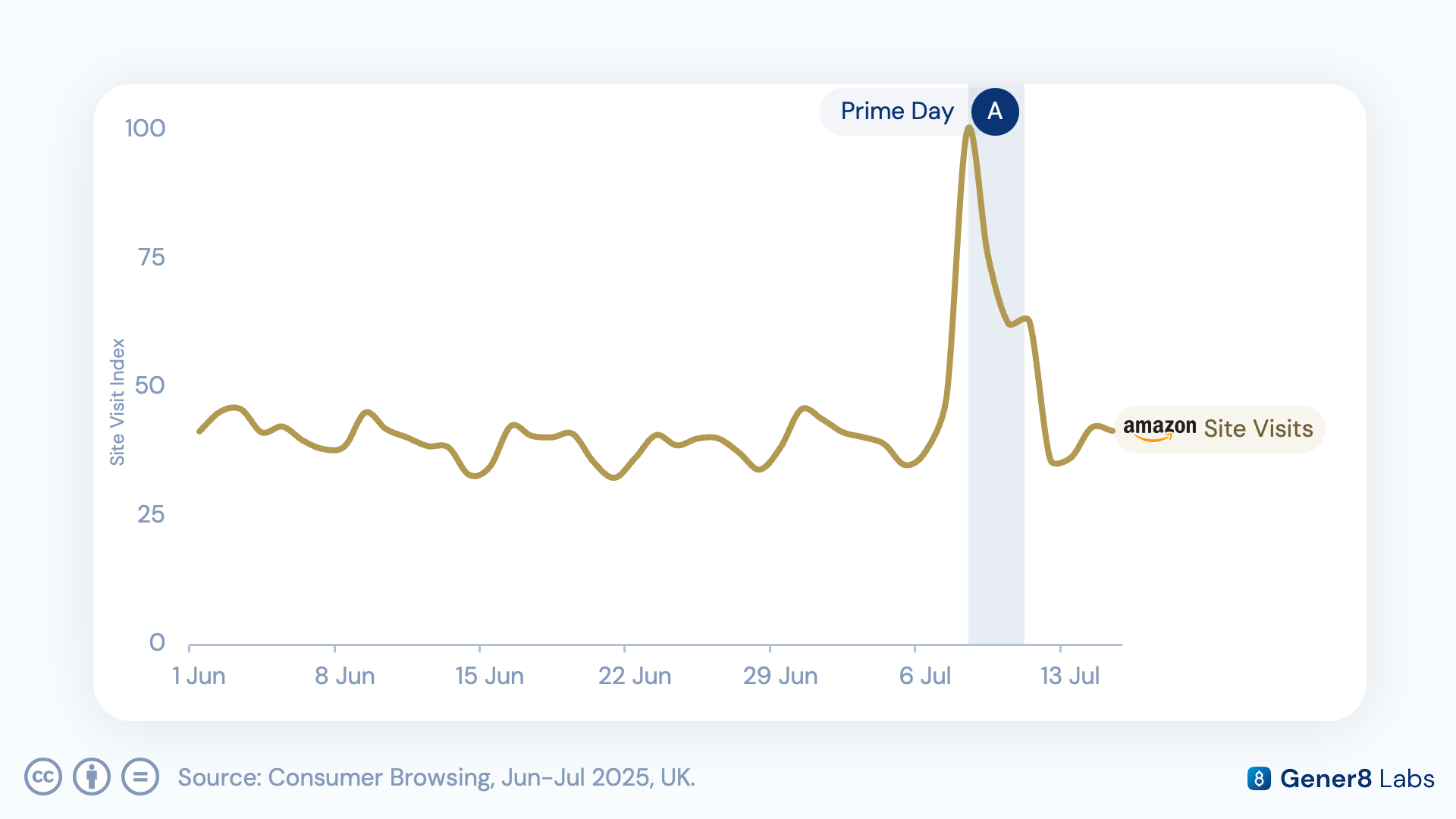
The 4-day sale (8th-11th July) drove a significant uplift in site visits, averaging 83% higher than the previous week (1st-4th July). While the sale launch day on 8th July saw the highest surge at 143%, even the sale's slowest day still recorded a strong 52% increase in visits.
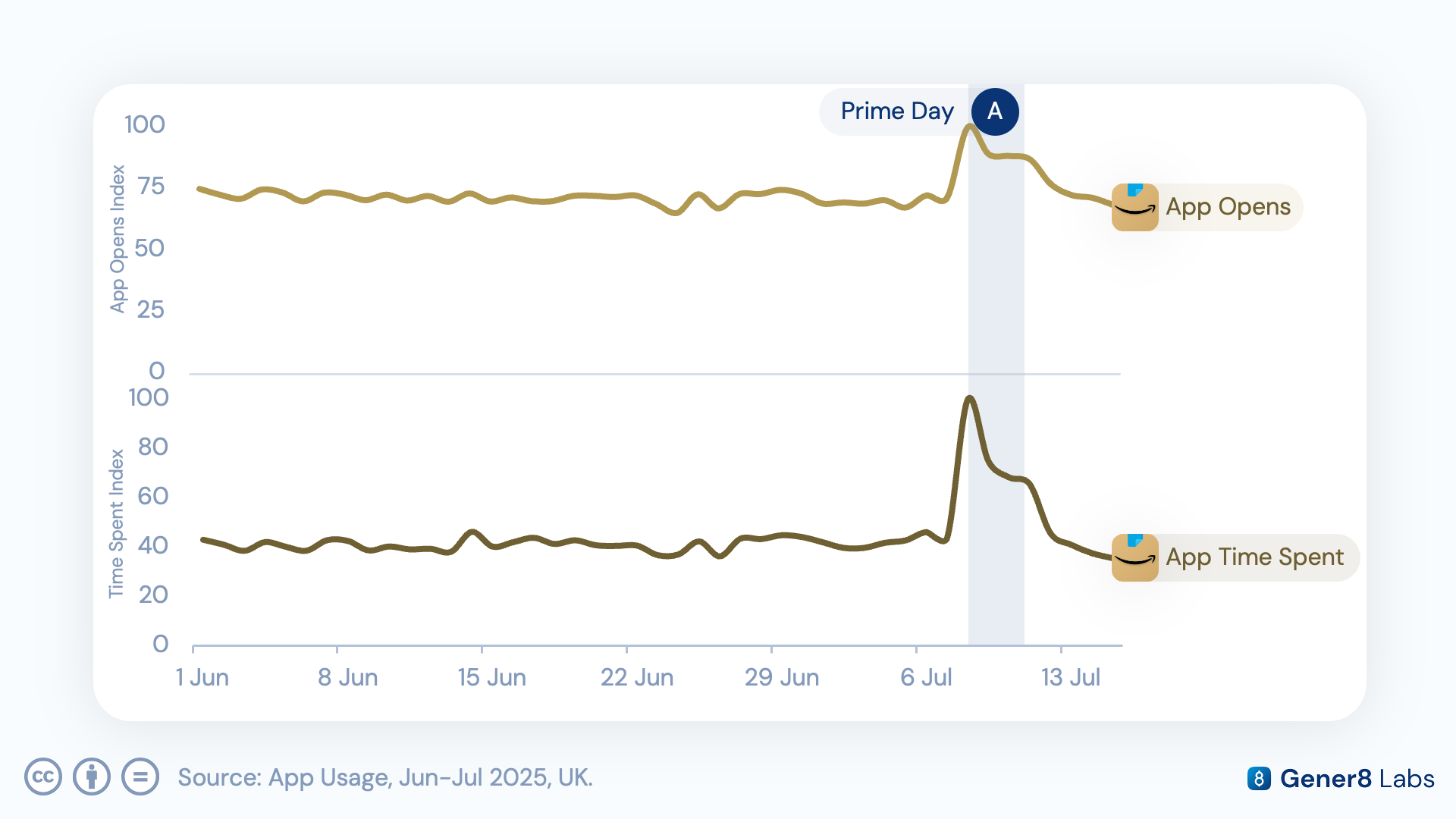
App Usage data showed that while Android app opens for Amazon increased by only 31% compared to the prior week, the total time spent in the app rose by 89%, suggesting users were much more engaged in exploring deals.
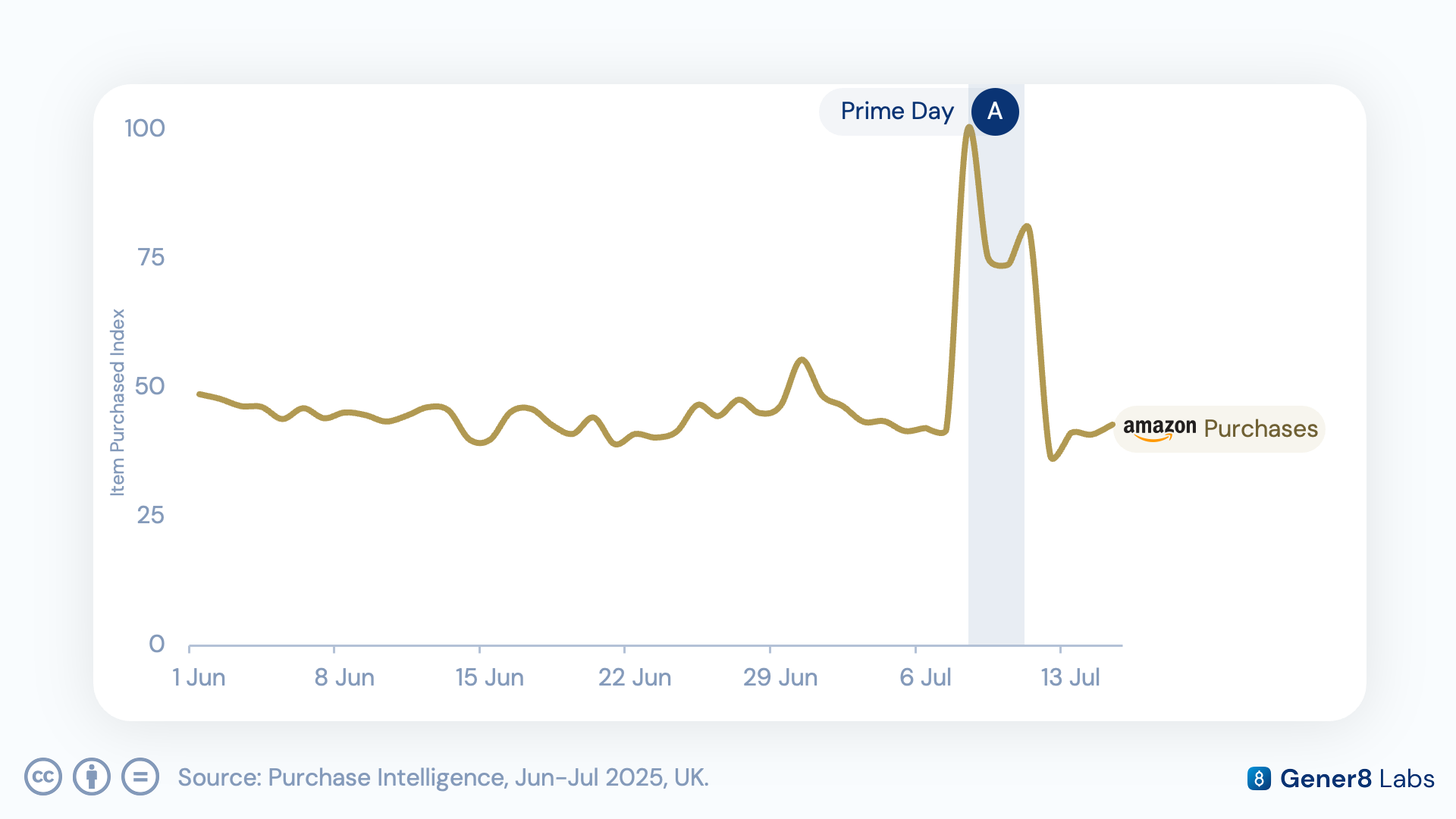
Finally, site sales surged during the 4-day sale period, with total items purchased increasing by 81% and total customer spend growing by 79% compared to the previous week. Whilst the first day of the sale was the strongest, it was interesting to observe a small uplift in the final day of the sale, likely driven by Prime members realising that the deals were about to end.
A core pillar of Amazon's Prime Day strategy is the aggressive promotion of its own hardware. The 2025 event in the UK was no exception, with a clear focus on devices that serve as gateways into Amazon's lucrative digital ecosystems.
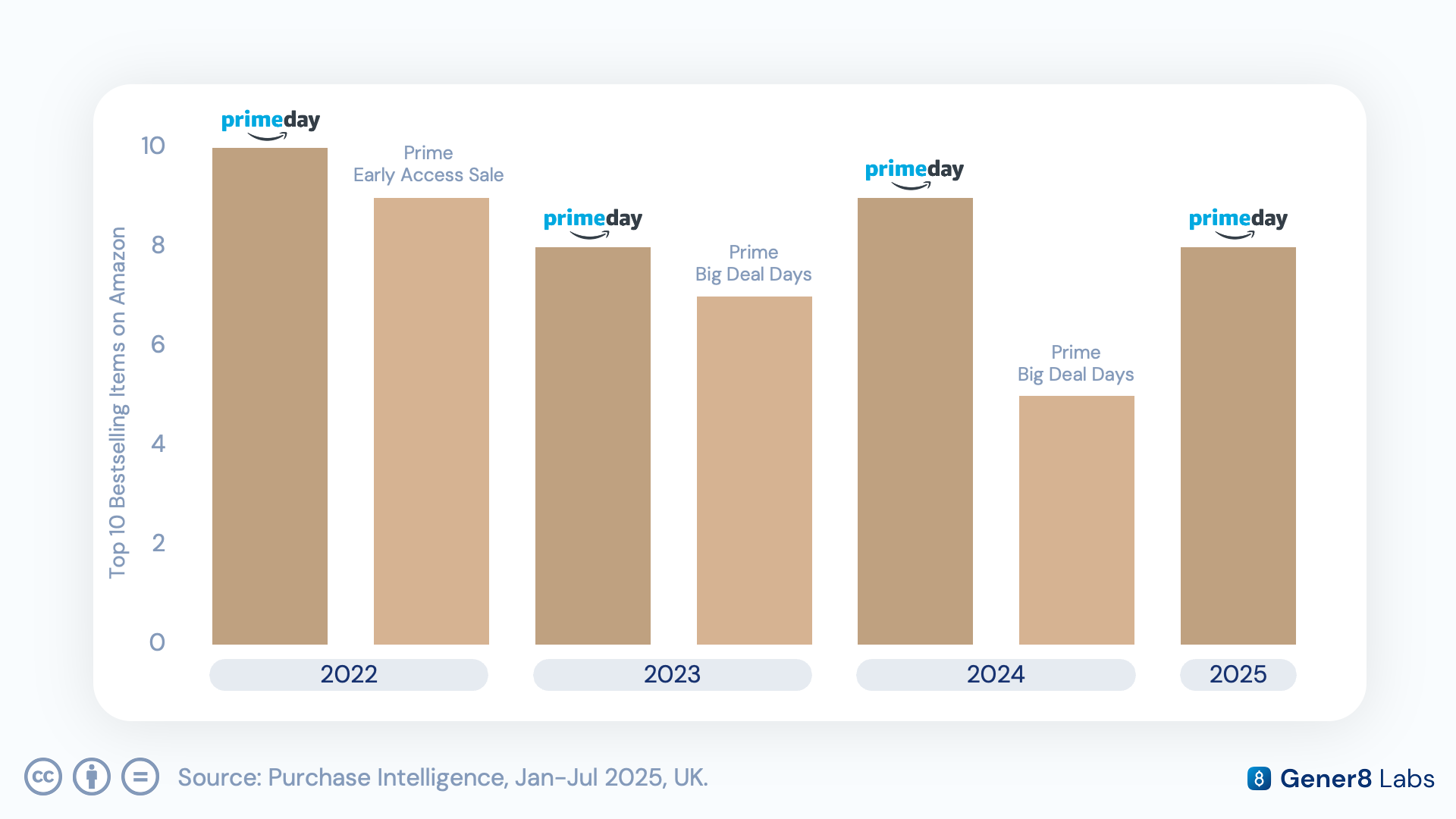
As with its previous major sale events, Amazon's own devices like the Fire TV and Kindle dominated the top-10 bestsellers, driven by deep discounts and prominent on-site placement.
However, the top-selling items were not chosen at random; their success reflects a deliberate strategy to embed Amazon's services into the high-growth, mass-market consumer domains of home security and streaming entertainment.
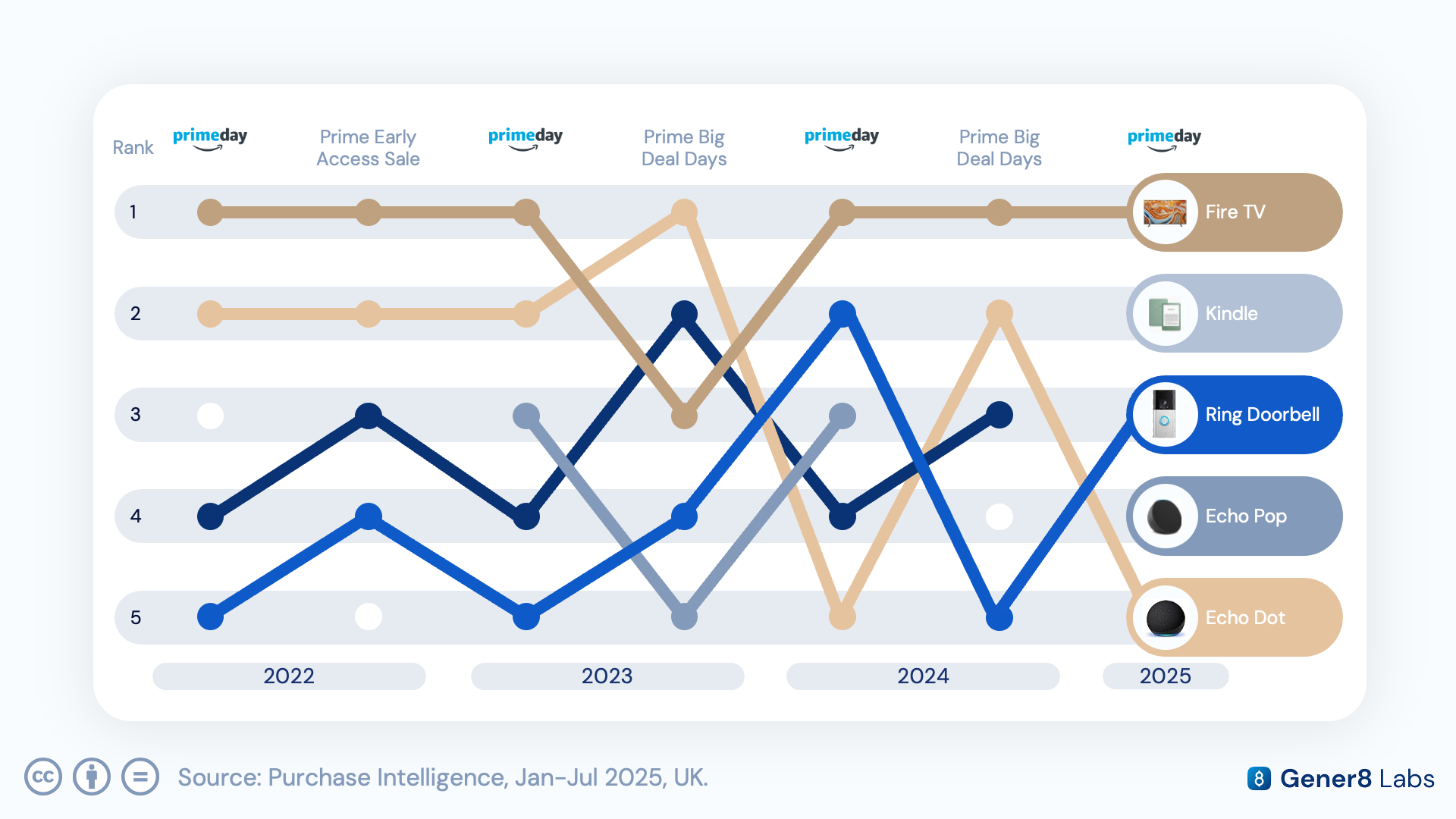
For instance, the Fire TV and Ring Doorbell lines emerged as the flagship best-sellers, driven by aggressive discounts of over 50% and designed to make them irresistible to Prime members.
This ecosystem expansion-centric approach prioritised the long-term acquisition of customers for high-margin subscription services, such as Ring Protect and Prime Video, over immediate hardware profit.
We utilised Gener8's Purchase Intelligence, Consumer Browsing and App Usage feeds to uncover insights into Amazon Prime Day 2025.
Gener8 Labs’ complete data and insights solution empowers media and marketing businesses to find actionable consumer and market insights, using our unique, consented, first party panel data sets that are all connected around one user ID.
Discover how you can power your decisions and gain a competitive edge from our behavioural truth set by contacting us today!



